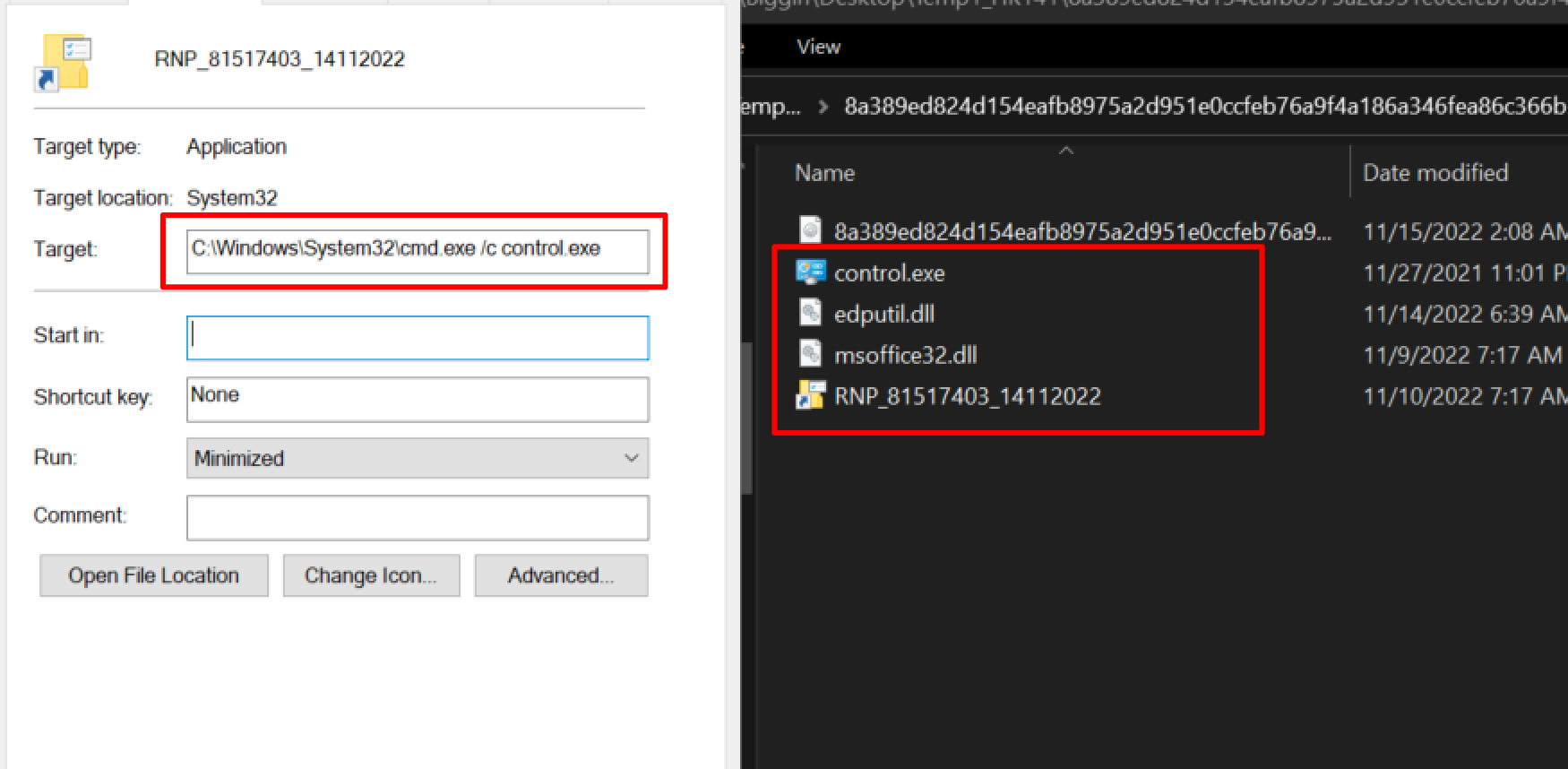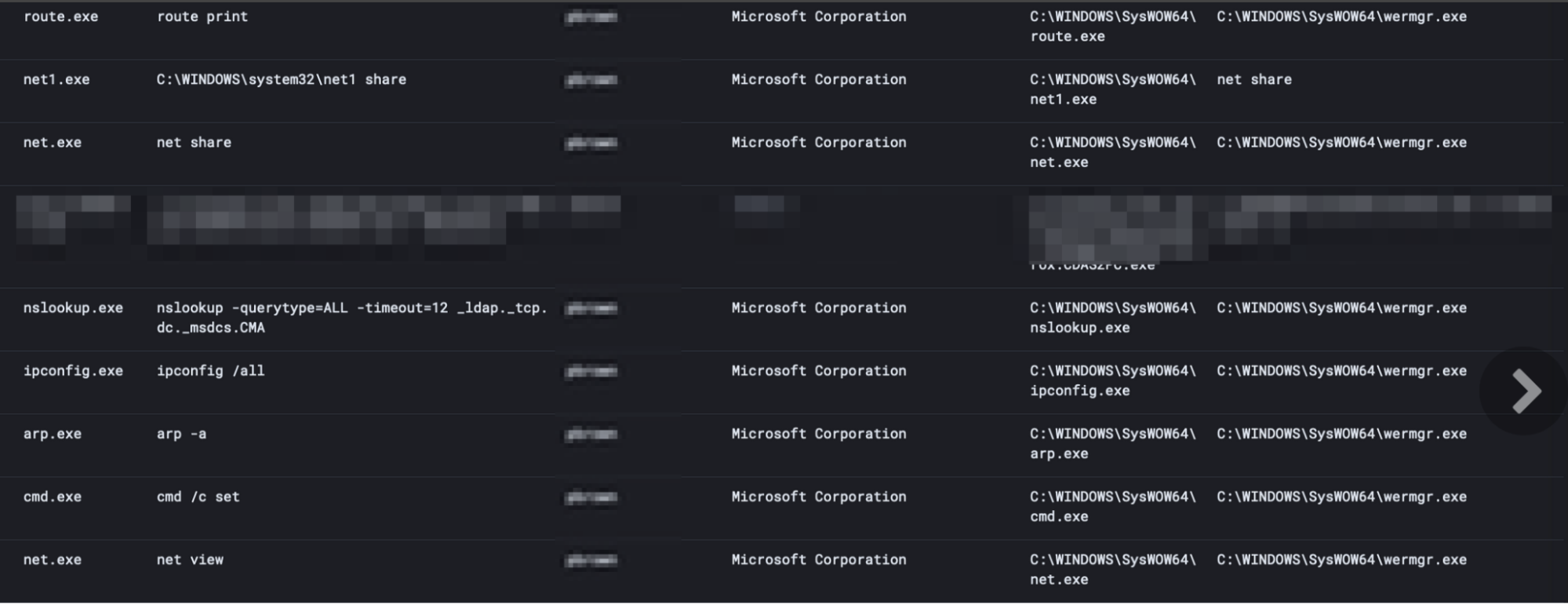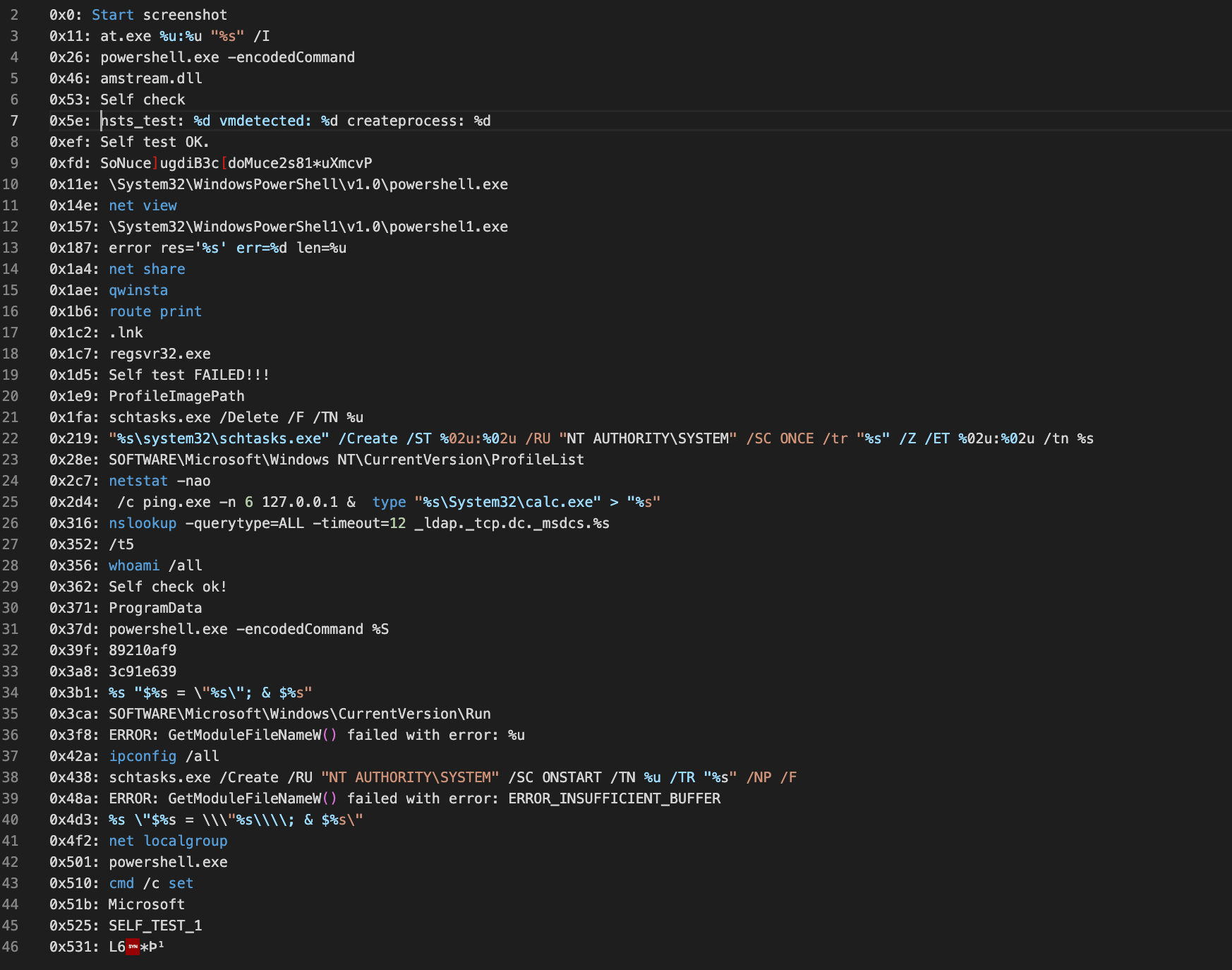







Qakbot has been spreading like wildfire. Huntress has seen a 400% increase in Qakbot cases in the past two months (several hundred incidents) in comparison to numbers from all of 2022 spread out over our 1.8 million protected endpoints.

QakBot is continuously maintained and developed and has evolved from a banking trojan information stealer, to form botnets, and into a delivery agent for ransomware. It is modular in nature enabling malicious cyber actors to configure it to their needs. (CISA, 2021)
Check out the below video to watch our interview with MSP Media Network—or keep reading to learn more.
Based on Huntress’ telemetry in Q3/Q4 2022, Qakbot’s initial access has been primarily through email HTML attachments that drop a ZIP into the user’s Downloads folder (`C:\users\*\downloads\*.zip`). Users then unzip and interact with the .LNK (Windows shortcut), which mounts an ISO, where Qakbot then begins its malicious execution and persistence.
Prevention is key to keeping this threat in check.
The real Qakbot execution begins once a user clicks on a .LNK contained within the .ISO. This second .LNK will typically trigger a short obfuscated script (.cmd or .js are common), which then locates and executes a Qakbot .DLL.
The Qakbot DLL is typically executed via regsvr32.exe or rundll32.exe.
Huntress also observed legitimate applications (calc.exe, control.exe) used to load the malware via .dll sideloading.
In these cases, the qakbot DLL and “legitimate” application will both be located within the mounted .iso file.
We have seen Qakbot launch by mounting an ISO or VHD. You can limit this capability by editing the registry.
This article (updated 12/6/22) has a great write-up on how to limit mounting an ISO. By the way, if some workstations need to work with ISOs, then maybe this isn’t the mitigation to apply to them and, instead, rely on more aggressive monitoring. The name of the game is risk mitigation and lessening your attack surface.
The developers of Qakbot continue to update their software, making detection via next-gen AV (NGAV) challenging. Here’s why:
Managed endpoint detection and response (EDR) solutions that see the processes executing and prevent their spread are critical for early remediation.
Below we can see the “Control.exe” from before. Silently it uses dll sideloading to load edputil.dll. Before ultimately executing msoffice.dll (qakbot) via regsvr32.


After successfully executing and injecting into wermgr.exe (a common qakbot target), we can also observe common enumeration commands executed via Qakbot.

Qakbot contains an embedded and encrypted list of commands that can be run. The team developed a script to extract these using Dumpulator. A subset of which looks like this:

Once executed successfully, Qakbot will move itself to a new folder and create persistence via a RunKey or Scheduled Task (depending on available privileges). Both of these utilize regsvr32 and rundll32 in conjunction with random file and folder names.
Keep an eye out for things like these:


It may seem redundant to mention patching and updating, but they are the most basic form of cyber hygiene available. Never underestimate the power of performing these two simple tasks. Create an expected cadence for this activity, so it is always on the radar and not overlooked.
For example, Microsoft is always releasing security updates that try to mitigate/address known attack vectors. Patching regularly and consistently will keep your endpoints protected.
Some but not all variants of Qakbot propagate to multiple machines via SMB shares, so disabling SMB shares may be appropriate as a potential preventive measure.
Caution: This hardening may have other side effects, so review your environment and make sure it won’t have negative consequences.
The longer it stays, the harder it is to kick out. In addition, Qakbot has self-defense mechanisms such as the ability to detect a shutdown and, if running in memory, will spawn persistence on shutdown.
Isolating infected hosts from the rest of the network is key to stopping the spread.
Unfortunately, this is the type of threat best dealt with hands-on. We all love to fix issues remotely, but you are going to have better success with boots on the ground at the client/user’s site.
If you do see an active Qakbot infection in your network, check out this KB article packed with handy remediation steps.
Winning is catching and evicting the threat actor before they can leverage this access to create a botnet, exfiltrate data or spread ransomware.
This includes mass isolation of entire networks to contain the threat. While we have seen organizations go offline for an entire day, it is better to be slow and thorough in order to avoid reinfection and having to repeat the process again.
Your call to action is to take action to reduce your client’s attack surface and start the conversations now about potential downtime.
It is a whole lot easier to have these conversations when things are working instead of having to talk about it in the middle of an incident.
Get insider access to Huntress tradecraft, killer events, and the freshest blog updates.
